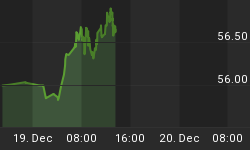As the bear market ends and a new cyclical bull market begins with the bottoming of the 6-year cycle, we continue see the lagging effects of this year's seismic volatility on almost a daily basis. For although the stock market price low has almost certainly been made and the 6-year cycle is starting to assert itself on the upside, more and more investors have capitulated to the emotional exhaustion the previous months have subjected them to.
The investor pessimism isn't surprising as bad news continues to dominate the news ticker. The November unemployment rate inched up to 6.7 percent. October's job loss was revised up to 320,000 jobs from 240,000, and September job loss was revised to 403,000 from 284,000. It was also announced that percent of all homes are now in foreclosure, while home sales and home prices continue to fall.
As if that wasn't enough to send shivers down everyone's spine, here are some more recent headlines that testify of the widespread dread everyone is feeling right now:
"Universities forced to tighten belts"
"Super-rich tighten purse strings on luxury goods"
"New York governor urges state spending cut"
"KKR delays New York float as private equity faces grim times"
"Car sales sink to lowest for three decades"
"Sports industry starts to feel the crunch"
"White truffle prices tumble as high rollers avoid auction"
"Famed portrait fails to sell at auction"
"It's like 1930s, says Merrill chief"
...and the granddaddy of all headlines that tells me the worst has been seen:
"'I made a mistake' admits Greenspan"
Let's face it; these are headlines that you just don't see every day. You won't even see most of these headlines after a major market correction like the ones we had in the ten years prior to this year. These are sentiments that only come around maybe once every 30-40 years and are truly historic in nature. Could the psychology get any more negative than this?

Here's another contrarian indicator that you'll rarely see. According to an article in the Dec. 1 Newsweek magazine, there is a growing market in certain cities around the U.S. for local currency. That's right, some areas have taken it upon themselves to deal with the cash shortage by printing their own currency, which it turns out, is legal provided certain rules are complied with. According to Newsweek, dozens of local currency systems flourished during the Great Depression but they're making a comeback after the credit crunch has done damage to local merchants. This to me is another major indicator that the bottom is in.
To give you an idea the extent of the capitulation, a couple of weeks ago the market witnessed the second highest TRIN closing value in years. (The TRIN is also known as the ARMS Index and is a measure of buying and selling pressure by comparing advancing and declining volume with advancing and declining share prices). The highest reading on a closing basis of 14.26 occurred on Feb. 27, 2007 on the "Greenspan Panic" when the stock market took a huge 1-day hit on the former Fed Chairman's bearish credit market comments. Of course that day proved to be the worst of the panic and the stock market bottomed shortly thereafter and resumed its advance.
This time around the TRIN reading of 10.18 was extremely high by historical standards and even by this year's standards of frequent panic selling and hyper volatility. Is it possible that the Dec. 1 decline in the major indices represented the last stage in the capitulation process? I'm inclined to believe that this was indeed a sign of ultimate capitulation.
Most of this year's volatility was a function of the crossing currents between the peaking 12-year cycle and the bottoming 6-year cycle. Now that the 12-year cycle has done its damage, the newly formed 6-year up cycle is gaining in strength and becoming dominant. The 6-year Kress cycle is a powerful one and can't be underestimated. The previous 6-year cycle bottom ended the bear market in October 2002 and the bear market of 2008 has also been killed by the 6-year cycle bottom.
The Fed's furious response in providing liquidity to a cash-starved market is finally meeting with some success and in coming weeks and months should be apparent to the majority of market participants. As Ian Scott, an analyst with Nomura, has said, "It is hard to image a more committed policy response than the one we have had, and there are now some tentative signs that it is having an impact." He stated further, "While it is always theoretically possible to invent an economic scenario to justify current prices, the scenario that would now be required necessitates policy failure on a scale not seen since the 1930s."
I concur with these sentiments and I don't believe we'll witness a failure of the bailout effort in 2009. The headlines and various other investor sentiment measures strongly suggest there is "blood in the streets"...and we all know what that means. Stock prices have been driven to insanely oversold levels and it's not uncommon for a rally of up to 50% or more in the months following a bear market, especially the magnitude of which we had this year.















